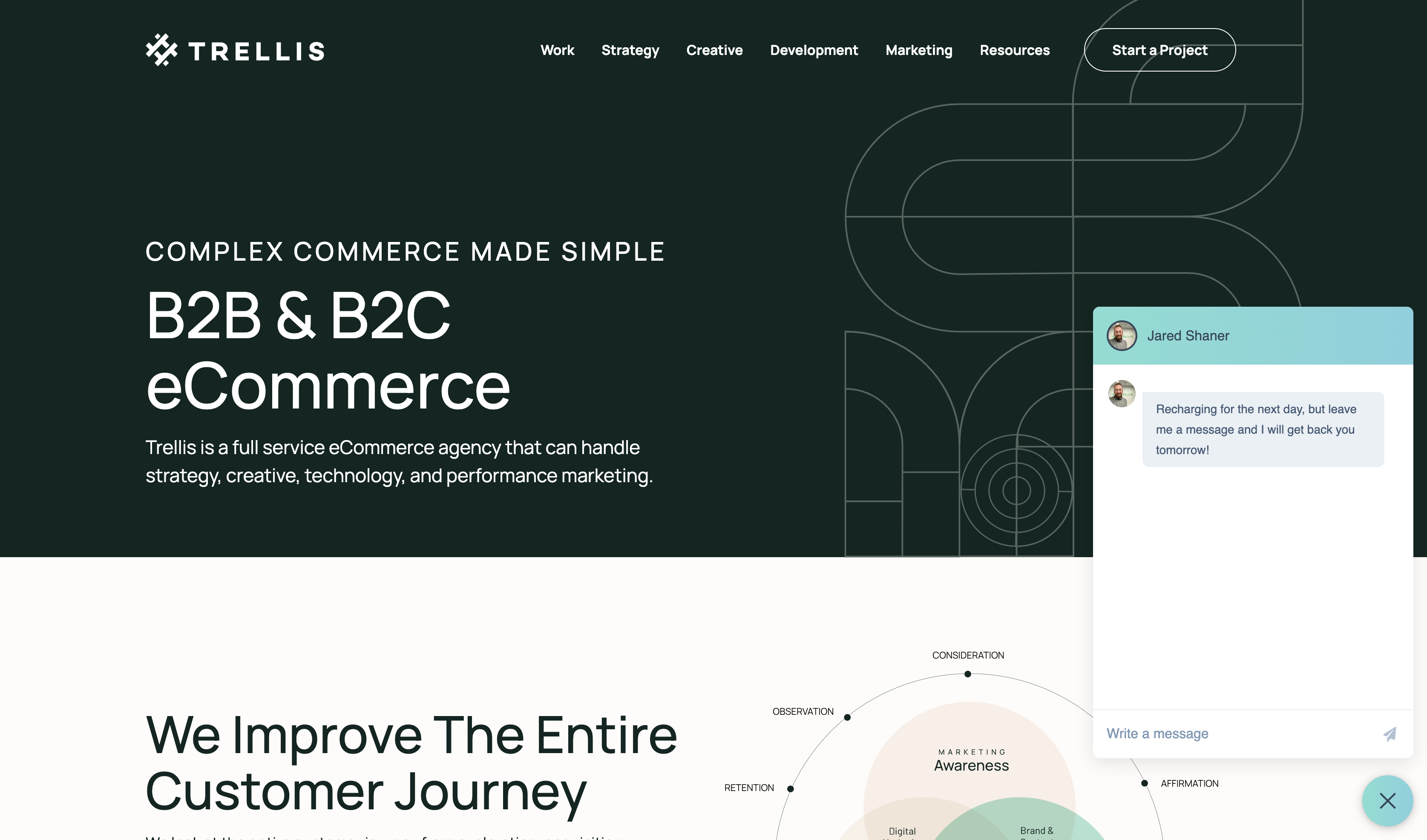AI Chatbot in eCommerce: Coding for Realistic Experiences
Charlie Fletcher
Charlie Fletcher
When people engage online — even with a chatbot — they expect a personalized, easy-to-understand experience. A 2023 report by Zendesk found that 64% of consumers want bots to provide the same level of service that humans do. An AI chatbot in eCommerce can significantly enhance this customer experience. In return, 70% of customers will spend more with your company.

How can you meet customers where they are while providing a realistic experience that mirrors how a human would interact? Artificial intelligence is used increasingly in today’s ecommerce industry to improve customer interactions. Today’s AI tools make it easier than you might think. Here are some ways to use an AI chatbot in eCommerce to engage your customers to build brand loyalty, encourage repeat purchases, and more.
Create Realism with Personality
AI chatbots are conversational and use natural language processing (NLP) to create natural-feeling user interactions. This is a significant improvement from older, rules-based chatbots that used a decision tree to deliver predetermined responses to questions.
However, to make the interaction realistic, it’s important to ensure your chatbot has a personality. That’s what makes it feel like another person is on the other end versus a robot. Give your chatbot a name, and let it start with a friendly greeting. The tone and personality should match your eCommerce brand, which should naturally appeal to your ideal customers.
A realistic chatbot with a brand-based personality can help improve your digital marketing. Additionally, it is a great real-time assistant for your existing customers who need quick answers to common questions.
Consider Multiple Interaction Options
As you build your AI chatbot in eCommerce, think about the many ways your customers might want to interact with it. For example, many people use voice-to-text or even send voice messages instead of typing. You might want to integrate your chatbot into your brand’s mobile app.
Try creating/choosing a chatbot software that allows both text and voice messages. It will certainly make it easier for your customers to get the information they need. Especially, it’s true for mobile users. A chatbot system can also be used to provide suggestions. For example, when customers are looking for what to purchase. Your automated AI recommendation can make the deal happen based on past order history.
You can also use the chatbot to offer multiple ways to get in touch with a real person. Usually, if that’s what the user needs, they will appreciate the quick prompt. Artificial intelligence can also direct calls to the correct department based on how complex or urgent the problem is. It allows you to be strategic about the types of inquiries that a customer service agent will deal with. Moreover, it is a good way to reduce call volume.
If your agents only deal with concerns that must be solved by a human, you can fix problems more quickly. Remember to have multiple interaction options. It will make it more convenient for users and help improve engagement and brand loyalty.
Ensure You Have Human Oversight of Technology Tools
When you deploy a chatbot online, it’s important to have human oversight of the technology. Although chatbots can sound very human, they are not human and can make significant errors. A human presence is needed because chatbots are driven by artificial intelligence. However, emotional intelligence is required in delicate situations.
In addition, in its current iteration, AI tools are best used in collaboration with, or in support of, human workflows. While AI may eventually supervise more complicated workflows, you still need humans. People can solve more demanding challenges in the eCommerce space.
How to Deploy and Maintain the Right Chatbot
Choosing and deploying an AI chatbot in eCommerce takes a lot of work. It’s important to maximize the return you get on your investment. The best way to approach it is to create a dedicated project for it. All the stakeholders should have a say in what features and solutions they want.

Start by setting a clear goal for what you want the chatbot project to accomplish. SMART goals are a great option; that way your goal is Specific, Measurable, Actionable, Relevant, and Timely. For example, “We want a chatbot to increase social media engagement by 25% by December 31st,” would be a SMART goal.
Your team could choose a chatbot solution, customize it to add the right personality and brand focus and deploy it. From there, you’d measure the increase in social media engagement to see if it’s helping you meet your goal.
Creating a project helps ensure all stakeholders agree on the target goals and are happy with the chatbot solution. From there, your social media manager can oversee the deployment, help you understand how well the chatbot is doing, and suggest improvements.
Boost Customer Engagement With Realistic Chatbots
The same Zendesk report found that 70% of customers believe the use of AI by companies can lead to more personalized and effective support. It’s crucial to find the right chatbot technology for your business processes. Here are the three components to consider for a smooth AI chatbot operation:
- give it a personality based on your brand;
- ensure proper human oversight;
- seamlessly integrate the chatbot with your existing systems and workflows.
With all components in place, it’ll increase brand loyalty and encourage repeat purchases.
Today’s AI is more conversational and powerful than ever. And a personalized chatbot is just one way to integrate this type of technology into your eCommerce business. AI can be used to write copy for your website and improve conversion rates. By harnessing this powerful technology, you can improve customer satisfaction and help your company grow.
If you’re looking for additional support with your brand communication, reach out to Trellis for a free consultation on how to scale your eCommerce business.
Author bio
Charlie Fletcher is a freelance writer passionate about workplace equity, and whose published works cover sociology, politics, business, education, health, and more. Check out the full portfolio on https://charliefletcher.contently.com/.
Leave a Comment